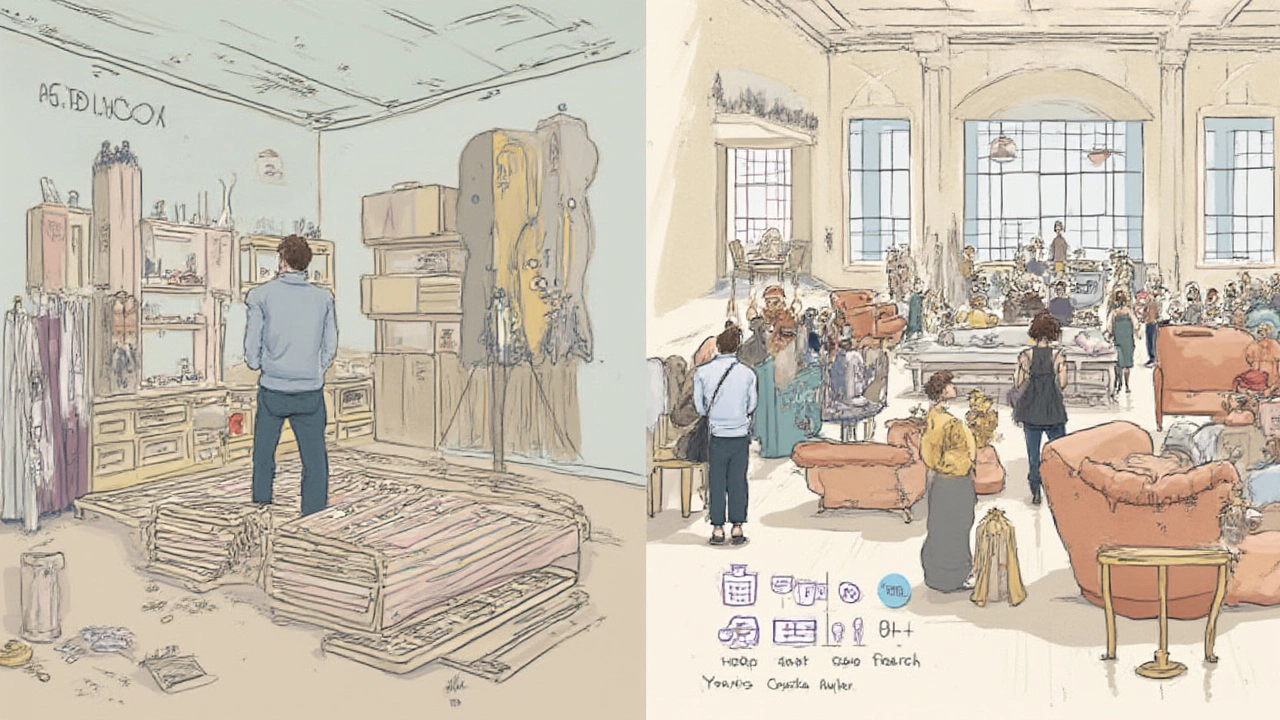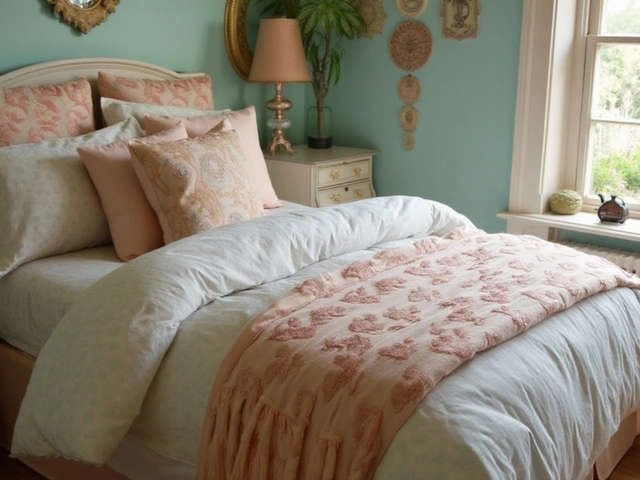Ever looked at a $2000 price tag dangling from a plush, dreamy sofa and thought, "Am I paying for furniture or funding a secret luxury island getaway?" This question feels especially close to home in New Zealand, where shipping alone can make you second-guess pressing that “buy now” button. Here’s the thing: almost everyone wonders if they’re being fleeced or if there’s actual value stitched between those cushions. The best place to start is stripping away the industry smoke and mirrors—what exactly does $2000 get you in today’s furniture market?
What Goes Into the Price of a Sofa?
So, why do some sofas chew through your bank account while others seem suspiciously cheap? Well, there’s more to it than just a fancy brand name or showroom lights. Let’s talk about what you’re really paying for.
Materials come first. Think solid hardwood frames versus particle board. A kiln-dried hardwood frame is like the backbone of a well-made sofa—it resists warping and handles daily use better than cheaper alternatives. Upholstery isn’t just about colour—cotton, linen, leather, and synthetic blends have different feels, durability levels, and cleaning needs. For instance, top-grain leather is much pricier (and tougher) than bonded leather. The big retailers, like King Living and Nood, often specify their frame materials and even offer ten-year warranties, which speaks volumes about expected longevity.
Then there’s labour. Sofas made in New Zealand or Australia might run higher because of stricter labour laws and higher wages. Compare that to mass-produced sofas coming out of factories in China or Vietnam, where lower labour costs shrink the final price.
Design complexity matters too. A modular sofa or something with built-in storage can easily ring up at a few hundred more. The more time a craftsperson spends assembling, tailoring, or adding details, the higher that price creeps up.
Don’t forget transport. Living at the bottom of the Pacific comes with a shipping tax. Just getting a single three-seater couch shipped from Europe can cost a retailer hundreds of dollars. Retailers pass that expense to you. Finally, there’s the retailer’s markup. Some big chains lean on volume sales, so they keep margins tight. Boutique or custom shops sell fewer pieces, so each sofa needs to pull its weight profit-wise. All these details add up. The $2000 tag isn’t as wild when you break down each line item.
Comparing $2000 Sofas to Cheaper Choices
People love a bargain, right? So, what if you can get a decent-looking sofa for $700, or even less, at a discount chain? There’s a real temptation to pocket the savings. But here’s the trade-off: the most obvious difference is lifespan. Sofas priced under $1000 are usually built with lower-cost frames (think pine, plywood, or MDF). They use basic foam cushions that lose their bounce and get uneven. After a couple of years, those sagging seats and noisy springs show up.
I’ve talked to several local upholsterers in Wellington, and they all agree—it’s the frame and suspension that tell the sofa’s future. Cheap ones often have stapled joints and janky innersprings, while a mid-range or $2000 sofa is likely to have glued and dowelled joints and high-resilience foam or even natural latex padding. The bounce-back stays nice, the arms don’t wobble, and your nap game never suffers.
When it comes to fabric, stains and pilling tend to show up on lower-quality textiles fast. Mid-priced sofas offer tougher, denser weaves and sometimes even removable, washable covers. This makes a huge difference if you’ve got pets or kids—especially in open-plan Kiwi homes where the couch is central to the action.
Warranty and services add value, too. Budget sofas often have short coverage—sometimes just three to 12 months. Sofas closer to $2000 may include five- or ten-year guarantees covering frame failure, structural issues, and sometimes even stain protection. That’s peace of mind money just can’t buy on cheap alternatives.
| Price Range | Average Lifespan | Materials | Typical Warranty |
|---|---|---|---|
| Under $1000 | 2-4 years | Plywood, MDF, basic foam, poly blends | 1 year |
| $1000 - $2000 | 7-15 years | Hardwood/ply frames, resilient foam, better fabric | 3-5 years |
| $2000+ | 15+ years | Solid hardwood, pocket springs, premium fabric/leather | 5-10 years |

Is 00 Actually Worth It? How to Decide
A $2000 sofa isn’t an impulse buy for most of us. You want it to last and to look good doing it. The real question to ask is: how much are you actually going to use it? If you’ve got a home full of kids, cats, or are committed to long Netflix binges, those cheaper sofas can leave you stuck with saggy cushions before you’re ready to shop again.
The sofa price sweet spot depends on lifestyle and expectations. Want your lounge to look photo-ready for years? Do you care if your sofa is easy to deep-clean? If the answers are yes, then spending more upfront can save you in the long run. Maintenance costs, extra throws to hide stains, and eventual replacement all add up. For example, Consumer NZ reports that higher-quality sofas outlast budget alternatives by up to a decade with basic care.
Think about resale, too. Quality brands (like David Shaw or Designers’ Collection in NZ) hold value—sometimes people make back half their initial spend if a move or style change comes up. Try that with a bargain import and you’ll struggle to give it away on TradeMe.
Want to be sure? Do the sit test. Head to a local retailer and just sprawl out. Notice the give of the arms, the structure under your weight, how the fabric feels against your skin. Check if covers zip off for washing or if replacements are available. If you’ve ever had a couch sag or breakdown in under two years, you already know that cheaper isn’t always smarter.
How to Get the Best Value for $2000
Not every two-grand sofa is automatically “the one.” There are ways to make that money work harder for you. Here’s how to spot a winner:
- Inspect the Frame. Ask whether it’s kiln-dried timber or just pine. Lift one corner—heavy, solid-feeling frames last much longer.
- Look for hand-tied or pocket spring suspension. These keep shape for years, while webbing or basic springs can sag fast.
- Test the fabric density. More threads per inch mean fewer pulls and pilling. If you see the weave shifting when you pull it, move on.
- If possible, buy local. Local makers are held to better standards and getting a repair or replacement is much easier.
- Hunt for floor model deals. End-of-line sales often drop prices by hundreds.
- Ask about extras. Some shops offer free delivery, cleaning kits, or stain-resistant coatings with premium models.
- Don’t skip the warranty. Five years is the new standard for anything around $2000—push for it!
And trust me, colour and style matter—choose something timeless that won’t be outdated in two years. Mushrooms, blues, and clean lines stay current while trendy shapes and loud hues move fast. If you pick removable covers, you can upgrade the look without buying a whole new piece.

Sofa Shopping in New Zealand: Facts, Trends, and Smart Buying Tips
Kiwis feel the pinch more than most, thanks to shipping costs, import duties, and even weather (damp, anyone?). According to Stats NZ, New Zealand households spent an average of $915 on living room furniture in 2024—but for a quality couch, $1500 to $2500 was common in city centres.
As for trends, modular sofas, bouclé fabrics, and bold colours are all over Instagram, but practicality still wins. Climate matters, too—leather lasts longer in drier spots, while tightly woven synthetics resist mould up north. If you’re in Wellington, make sure what you buy can squeeze through a classic villa doorway. You’d be shocked how many returns happen because the couch literally won’t fit up a staircase.
Don’t be shy about asking for extras. Lots of NZ stores will throw in fabric protection, double-check stitching, or offer free assembly at home, especially if you’re willing to negotiate a little.
The most successful shoppers I know mix online research with “real-life” tests. Read reviews, hunt forums for stories that sound like your situation, but never skip the actual shop visit. The comfort test is non-negotiable.
- Measure your space twice.
- Imagine your life three years from now—kids, dogs, moving home, hosting all your friends. Will this couch fit the plan?
- If you buy online, check the return policy. Some retailers cover return shipping, others don’t.
If you find a $2000 sofa that ticks every box—real wood, strong suspension, comfy and easy to clean—it’s actually good value. So while $2000 feels like a splurge, think of it as paying for long-term comfort, less hassle, and a living room that really feels like home.







